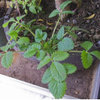bindweed aka wild morning glory aka convulvulous
Suzi AKA DesertDance So CA Zone 9b
11 years ago
Featured Answer
Comments (9)
jean001a
11 years agoRelated Professionals
Londonderry Landscape Architects & Landscape Designers · Edmond Landscape Architects & Landscape Designers · Citrus Heights Landscape Architects & Landscape Designers · Ilchester Landscape Architects & Landscape Designers · Zion Landscape Architects & Landscape Designers · Salem Landscape Contractors · Addison Landscape Contractors · Alamo Landscape Contractors · Byram Landscape Contractors · Lemay Landscape Contractors · Lyndhurst Landscape Contractors · Sun City Center Landscape Contractors · West Covina Landscape Contractors · Goldenrod Landscape Contractors · Norridge Landscape ContractorsKimmsr
11 years agobstnh1
10 years agorunswithscissors
10 years agohortster
10 years agoKimmsr
10 years agoTiffany, purpleinopp Z8b Opp, AL
10 years agoKimmsr
10 years ago
Related Stories

TREES11 Japanese Maples for Breathtaking Color and Form
With such a wide range to choose from, there’s a beautiful Japanese maple to suit almost any setting
Full StoryMore Discussions








Suzi AKA DesertDance So CA Zone 9bOriginal Author